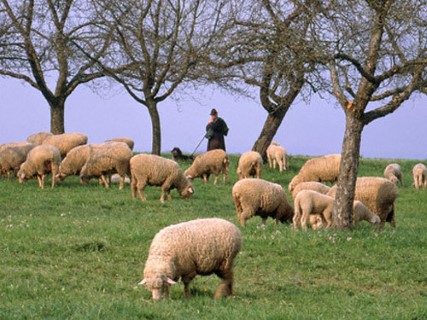German Whiteheaded Mutton, or Deutsches Weisskopfiges
Fleischschaf,was developed along the
North Sea coast in the middle of the last century. English Leicester, Cotswold,
Hampshire, and Oxfordshire were imported and crossbred with the local
Wilstermarschschaf, a northern German marsh sheep. Breeders succeeded in
retaining the wanted qualities of the marsh sheep, such as high fecundity, fast
development, and large size. In the 1930s, a new breed, the German Whiteheaded
Mutton started to roam the grassy areas next to the North Sea.
They are the perfect breed to withstand the rough, damp sea
climate and suited for life on the dikes. The sheep fatten on the lush dike grass,
pound down the earth and encourage new grass growth, thus helping to stabilize
the North Sea dikes which makes them resistant against storm floods. The sheep
need to be rugged and to protect them against the weather; they have a long,
rough fleece with a fiber diameter of 37 to 41 microns. The white wool, also
known as Eider wool, has a good crimp which is unusual for such rough wool.
